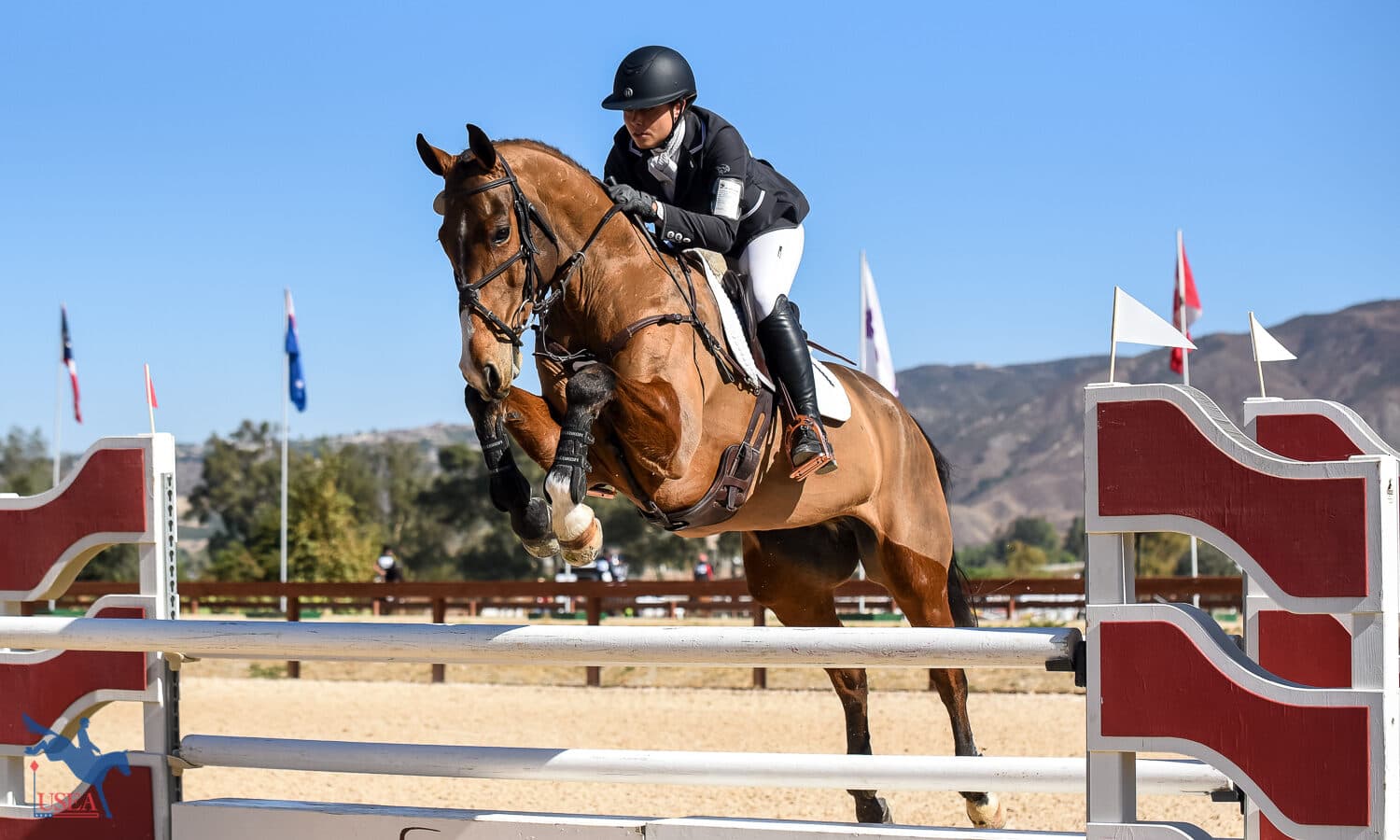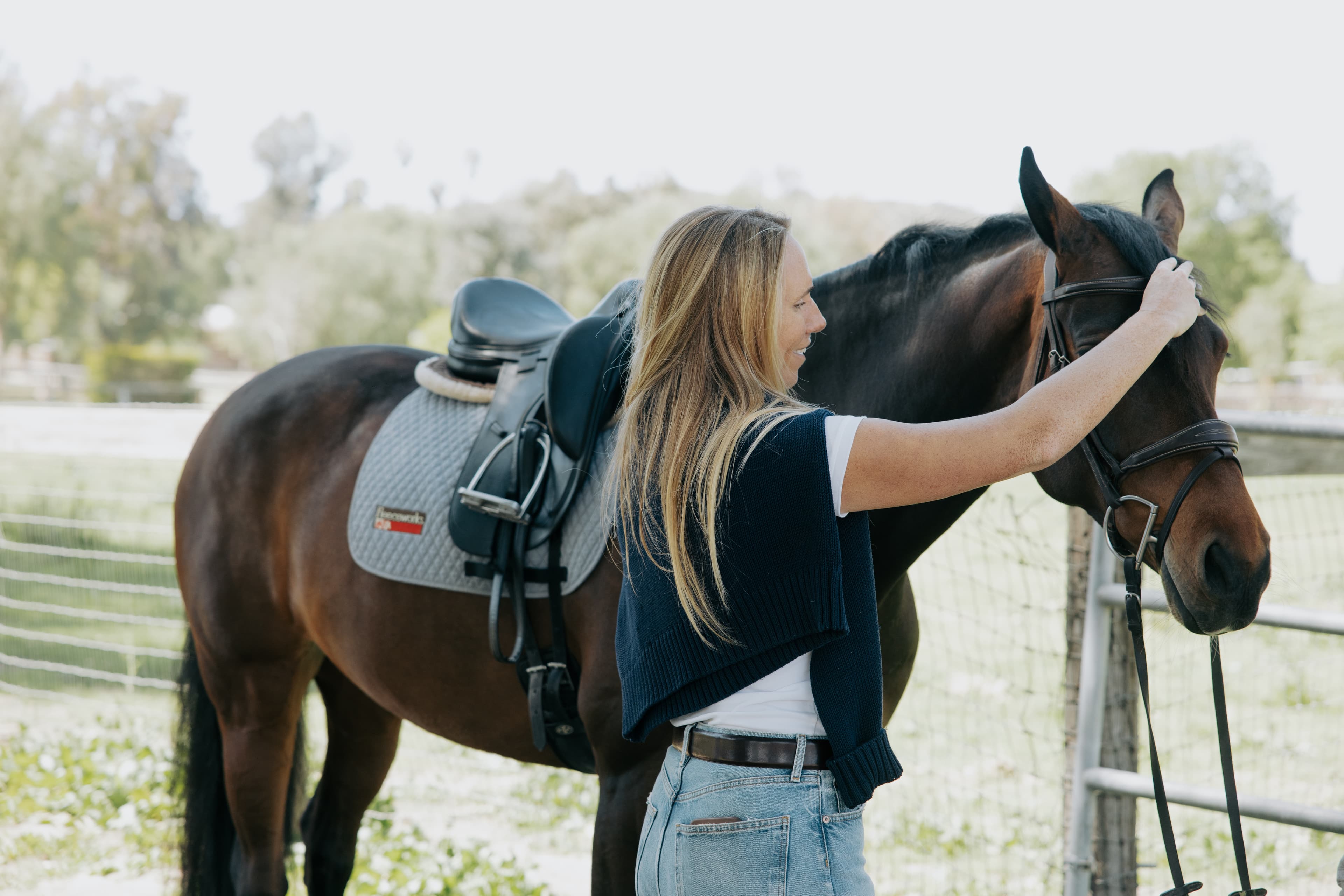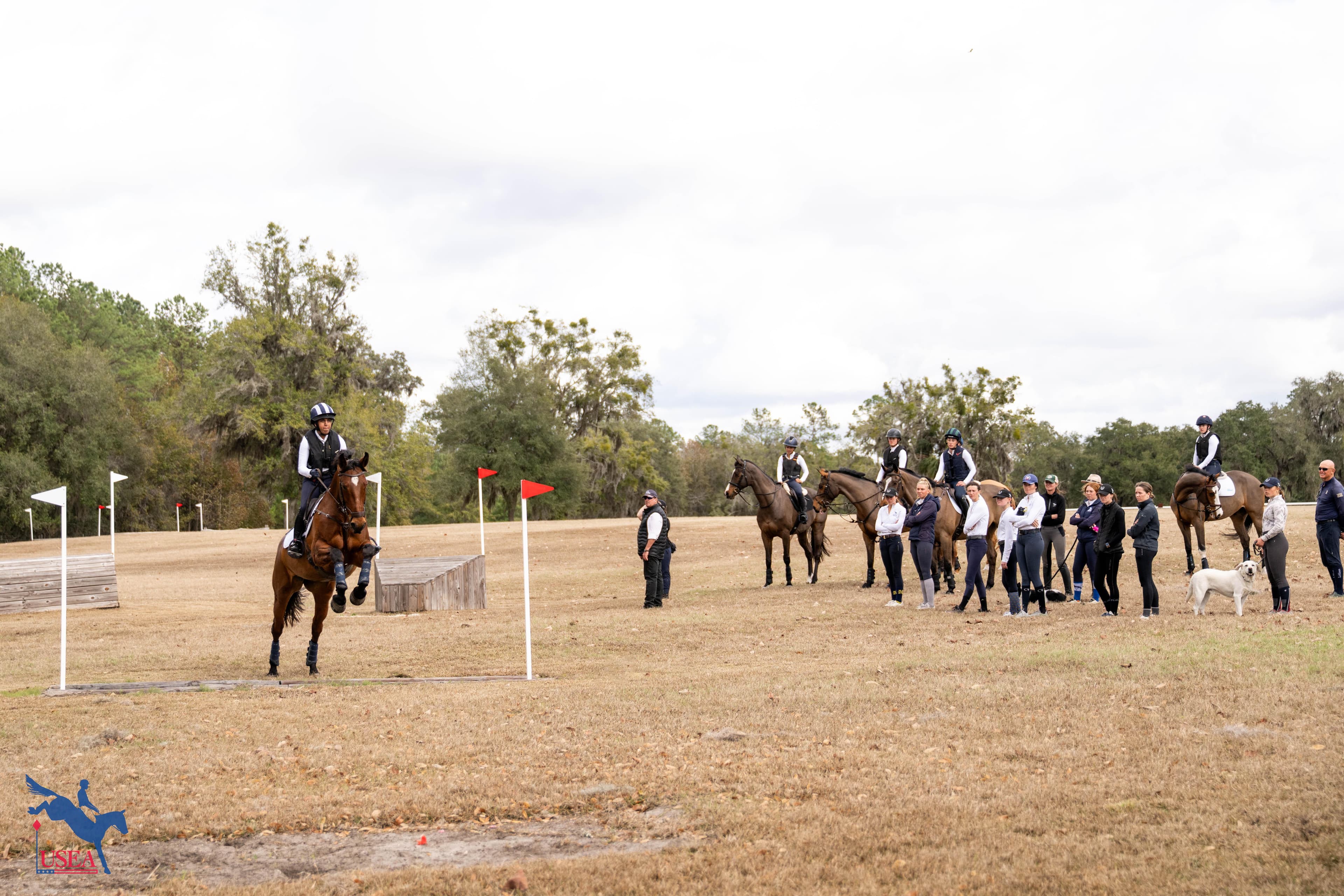Rules
Rule Refresher: The Jumping Test

The third phase of eventing is show jumping, where horses and riders demonstrate their ability to continue with the competition after the grueling cross-country test. A jumping course consisting of colored rails is set and horse and rider must navigate the course without knocking down the fences and incurring penalties. While it is frequently the last of the three phases for horse and rider to complete, show jumping sometimes takes place before the cross-country test.
Text has been taken directly from the USEF Rules for Eventing with emphasis added by the USEA.
EV143 Jumping Test
- The “F.E.I. Rules for Jumping Events” apply for Eventing Jumping except where otherwise provided in these rules.
- This test is similar to an ordinary show jumping competition, but without any attempt to find a ‘winner’ of this test on its own. Its main objective is to prove that, the horse and rider are well trained in the specialist discipline of show jumping.
- The nature of the course, its length, the speed demanded and the dimensions of the obstacles depend on the degree of difficulty of the whole competition.
EV144 Arena
- The arena must be enclosed. While a horse is in the arena during a competition, all entrances and exits must be physically closed.
- Where the arena size is less than 5000 square meters (approximately 90m x 55m [300ft x 180ft]) the maximum speed to be used for any division shall be 350 meters/min. In arenas of less than 2300 square meters (approximately 75m x 30m [250ft x 100ft]) the maximum speed to be used shall be 325 meters/min.
EV145 The Bell
- The bell (or other sound) is used to communicate with the competitors. One of the members of the Ground Jury or the additional judge is in charge of the bell and responsible for its use. The bell is used:
a. To give permission to the competitors to enter the arena when the course is ready for their inspection and to signal that the inspection time is over;
b. To give the signal to start and to activate a 45 seconds countdown. The 45 seconds countdown sets the time that the competitor can spare before commencing his round. The Ground Jury has the right to interrupt the 45-second countdown if unforeseen circumstances occur. Disobediences, falls, etc., occurring between the signal to start and the moment the competitor crosses the starting line in the correct direction, are not penalized. After the bell has rung, crossing the starting line in the correct direction for a second time before jumping the first obstacle is counted as disobedience.
c. To stop a competitor for any reason or following an unforeseen incident and to signal to him to continue his round after an interruption (EV152.9a);
d. to indicate to him that an obstacle knocked down, following a disobedience, has been replaced (EV152.9a);
e. To indicate by prolonged and repeated ringing that the competitor has been eliminated. - If the competitor does not obey the signal to stop, he may be eliminated at the discretion of the Ground Jury (EV154.3d) except where specifically provided for under EV152.9b
- If, after an interruption, the competitor restarts and jumps or attempts to jump without waiting for the bell to ring, he will be eliminated (EV154.2m).
EV146 Courses And Measuring
- Within the limits shown in Appendix 2, the Course Designer is free to plan a track suitable to the level of the competition. It is permissible, with the approval of the Technical Delegate and Ground Jury, to add up to 10% of the maximum permitted distance.
- The Technical Delegate and/or the Ground Jury must walk the course to inspect the obstacles before the start of the competition. The course is the track, which the mounted competitor must follow when competing from passing the start in the correct direction up to the finish. The length must be measured accurately to the nearest meter taking into account, particularly on the turns, the normal line to be followed by the horse. This normal line must pass through the middle of the obstacle.
- The starting and finishing lines may not be more than 15 m nor less than 6 m from the first and last obstacle. These two lines must each be marked with an entirely red flag on the right and an entirely white flag on the left.
- The round starts when the competitor crosses for the first time in the correct direction the starting line after the bell has been rung. The time awarded to the competitor starts running either upon crossing the starting line or upon expiration of the 45th second of the countdown mentioned in EV145.1b, whichever occurs first.
EV147 Course Plan
- A plan showing accurately all the details of the course must be posted as close as possible to the entrance of the arena, at least half an hour before the beginning of each competition. An identical copy must be given to the Ground Jury.
- The obstacles are numbered consecutively in the order in which they must be jumped.
- Combination obstacles carry only a single number. This number may be repeated at each element for the benefit of the Ground Jury and competitors. In this case, distinguishing letters will be added (for example: 8A, 8B, 8C etc).
- The plan must indicate the following: The position of the starting and finishing lines.
a. The relative position, type (spread or vertical obstacle, triple bar) numbering and lettering of obstacles.
b. The track to be followed by competitors marked by a series of arrows showing the direction in which each obstacle must be jumped.
c. The time allowed and time limit.
d. All decisions and/or modifications made by the Ground Jury in regard to the course.
EV148 Flags
- Completely red flags and completely white flags must be used to mark the following details of the course:
a. The starting line.
b. The limits of the obstacles; the flags may be attached to any part of the wings of the obstacles. They may also stand independently. One red flag and one white flag must be placed at vertical obstacles and at least two red and two white flags to define the limits of spread obstacles. They must also be used to mark the limits of the obstacles provided in the schooling (warm-up) areas.
c. The finishing line. - At the obstacles, the starting and finishing lines, the competitor must pass between the flags (red on his right and white on his left).
- Knocking down a flag anywhere in the arena does not incur a penalty. If a flag marking the limits of an obstacle or the finishing line has been knocked down following a disobedience/resistance, (without passing these lines) or as a result of unforeseen circumstances, the flag will not be replaced immediately; the competitor must continue his round and the obstacle will be judged as if the flag was in its original place. The flag must be replaced before the next competitor will be given the signal to start.
Want to catch up on past rule refreshers? Click here.














